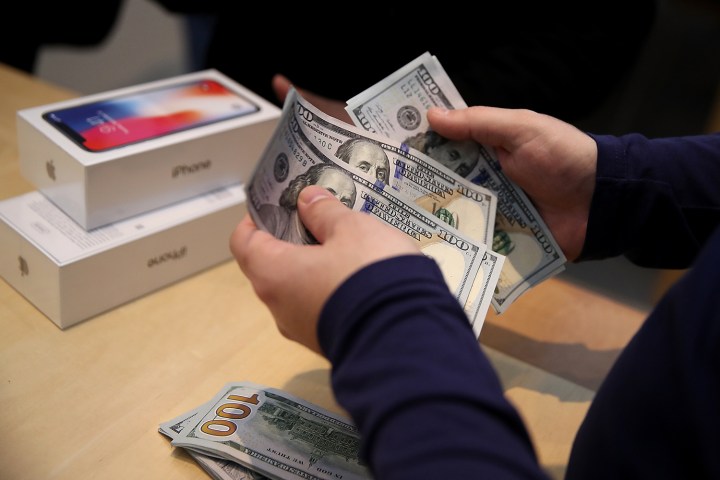
Apple events are always big, and few tech product releases generate the level of excitement we see over new iPhones. This year, we saw an oddly-named trio of new phones and a new smartwatch, but that’s not all Apple unveiled on the Cupertino stage, we also saw a whole new level of greed from the world’s richest company.
We can wax lyrical about the stunning iPhone XS, the super-sized iPhone XS Max, and the more affordable iPhone XR. Make no mistake, these are highly-desirable, thoughtfully-designed smartphones that will bring joy to many people. Whether they’re worth the high fees Apple commands is debatable. A price of $1,450 for the 512GB iPhone XS Max seems excessive, but most people will be perfectly happy with the $750 iPhone XR.
Ultimately, a product is worth what people are prepared to pay for it, and by that measure Apple’s wares are worth every penny. The greed we’re talking about here isn’t the price of the iPhones — it’s the clever little ways that Apple finds to gouge us for extra cash. Tactics that mostly Apple is indulging, though given the industry’s propensity for copying, it may only be a matter of time until other manufacturers follow suit.
Overcharging for fast charging

As mentioned in last year’s iPhone 8 review, the fact that Apple advertises its iPhones as capable of fast charging, but doesn’t actually provide a fast charging adapter or cable in the box is ridiculous. This year’s iPhones are the most expensive yet, but even if you buy the $1,450
Fast charging is an industry standard. You can buy a $250 Moto G6 and you will get a cable and power adapter in the box that enable you to fast charge it.
Apple offers a 1-meter USB-C to Lightning cable for $19 and if you want to charge at full speed you’ll have to pair that with a 30W USB-C Power Adapter for the princely sum of $49. To rub salt in the wound, Apple’s cables aren’t even good quality. There are many more durable options out there for much less.
We had truly hoped that Apple would at least upgrade the cable this year, if not the power adapter. There were many rumors to that effect, but instead of doing that, Apple doubled down on its accessory-based profiteering by quietly removing the Lightning-to-3.5mm headphone adapter from the box.
The dongle debacle

How much does this tiny accessory cost at the Apple Store? That’ll be $9 please. Thank you very much.
If you’re skeptical about this being a deliberate tactic to boost profits, then check out the report from Ceros which reveals that the dongle has been Apple’s best-selling product at Best Buy for the last year — before that it was the Lightning-to-USB 2.0 cable. Those figures are from a time when Apple was including one in the box for free, so expect those sales to soar further when the new iPhones come out.
The thing is, Apple got rid of the headphone jack when it introduced the
Another point to make that seems terribly obvious is that — if people don’t need a headphone jack any more, why are they buying so many dongles?
It may also be worth mentioning that Apple is in the business of selling
Eye-watering markup

Every year someone posts a breakdown of Apple’s costs to actually build the new iPhone. For last year’s
If you think the iPhone markup is big, you should consider that accessories like the headphone dongle cost pennies to manufacture. Even if we generously put the cost at 50 cents, that’s a profit of $8.50 on every dongle it sells. While devices like the iPhone are packed with reasons to justify the premium Apple charges, that’s simply not true of its overpriced accessories.
Companies are going to try and maximize profits, it’s a duty they have to their shareholders, but there’s a line where the gouging becomes unpalatable. It would cost Apple a few cents to include that dongle in the box, but it ends up costing us a few dollars. On top of devices that are already among the most expensive on the market, and coming from the richest company in the world, in a market where competitors all provide fast chargers and dongles in the box, this just feels greedy.
Editors' Recommendations
- This one Apple Fitness feature completely changed how I exercise
- An Apple insider just revealed how iOS 18’s AI features will work
- iPhone 16: news, rumored price, release date, and more
- iPhone SE 4: news, rumored price, release date, and more
- 3 reasons why I’ll actually use Anker’s new iPhone power bank


